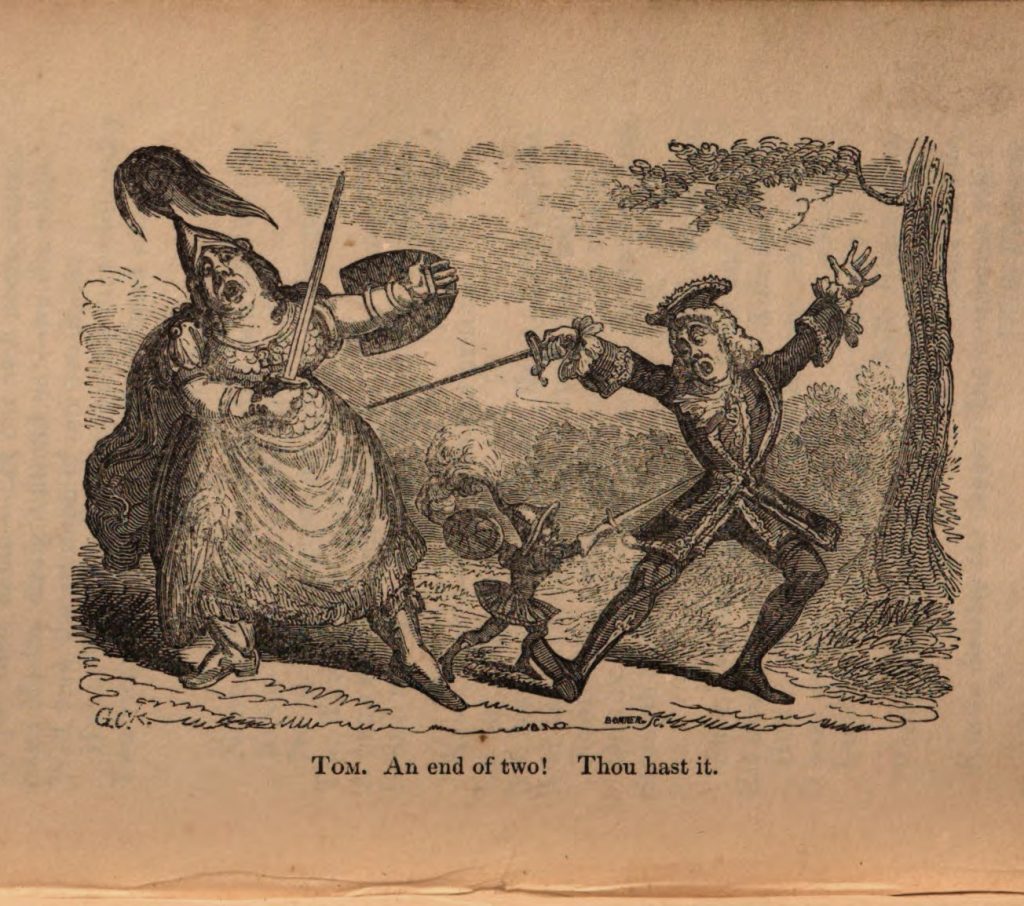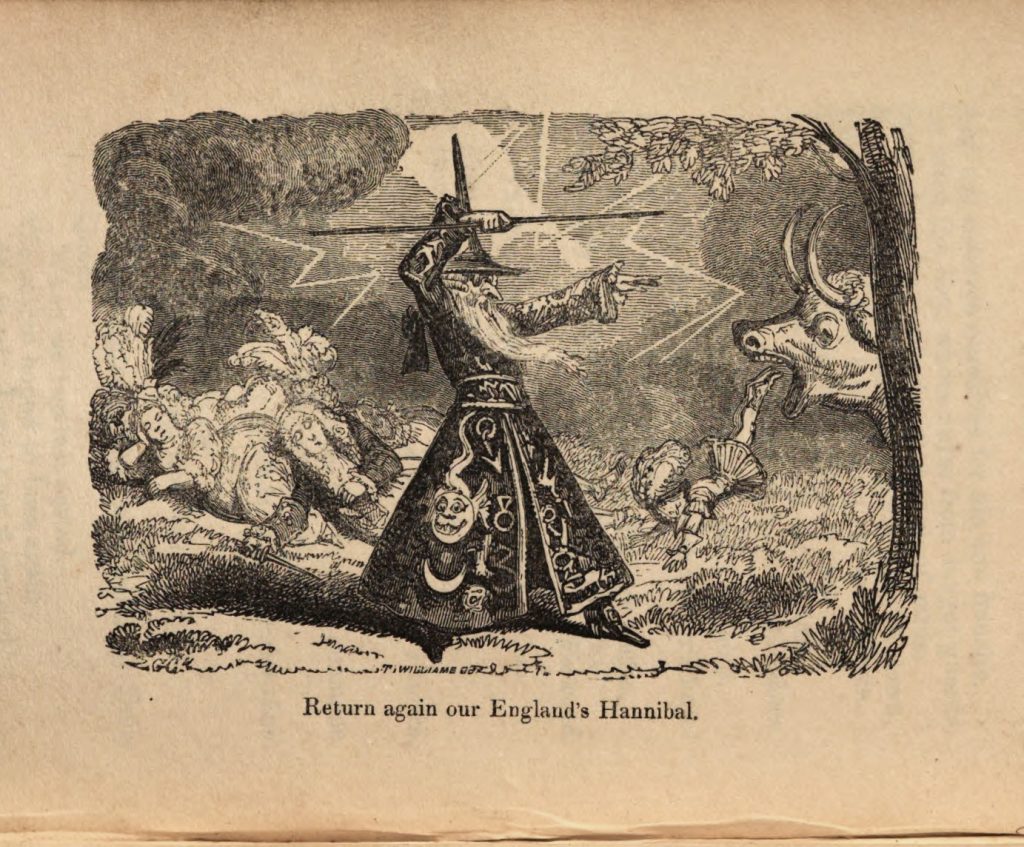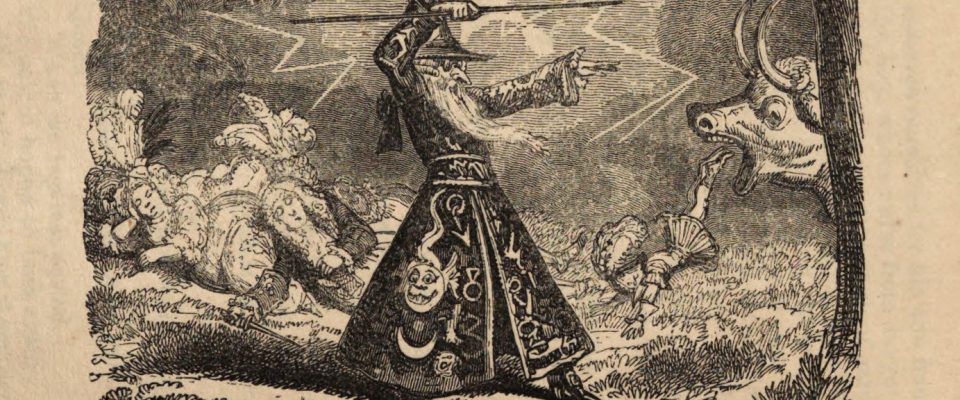If you ever happen to meet with two volumes of Grimm’s ‘German Stories,’ which were illustrated by Cruikshank long ago, pounce upon them instantly; the etchings in them are the finest things, next to Rembrandt’s, that, as fas as I know, have been done since etching was invented.
Ruskin in Jerrold’s biography of Cruikshank
Cruikshank’s style lent itself perfectly to a genre that took the publishing industry by storm: children’s literature. In the late eighteenth and early nineteenth centuries, publishers like John Newbery were pioneers, commissioning and printing books expressly written for children. Previously, the majority of English books catered to adults. Even Wilhem Grimm, one half of the famed “Brothers Grimm,” described their primary target audience as “adults and serious people” who might then choose to read their stories to children (qtd. in Zornado 84). Cruikshank’s career coincided with the shift towards printing books for child readers and, indeed, contributed to the popularity of children’s literature, even taking up the pen himself to rewrite famous folklore and fairy tales for his “Fairy Book,” featured below.
His engravings reflect the fanciful and eccentric stories he illustrated, and the quality and quantity of his work in the popular fairy tale genre only solidified his reputation as a leading British illustrator. As nineteenth-century biographer Walter Hamilton observed, “It is in fairy scenes that the delicacy of touch, the exquisite finish, and above all the really poetical imagination of Cruikshank are displayed to the fullest extent. His ghosts and his fairies are exactly like what we imagine such beings must appear” (Read more from Hamilton ).
Click on the images below to learn more about each illustration











 Albin O. Kuhn Library & Gallery
Albin O. Kuhn Library & Gallery